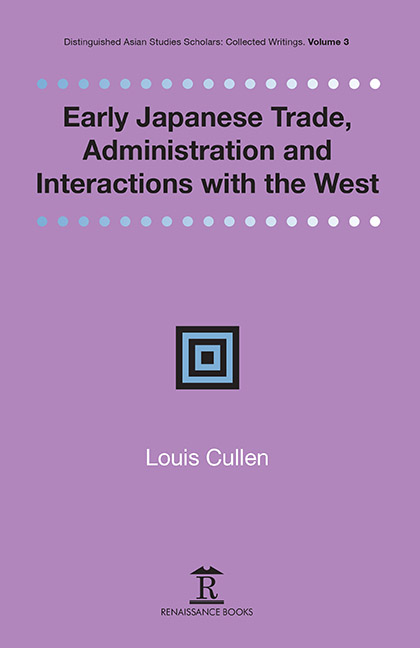10 - The Foreign Trade of Nagasaki: The Nagasaki Trade of the Tokugawa Era: Archives, Statistics and Management
Published online by Cambridge University Press: 30 April 2022
Summary
THE STUDY OF Tokugawa-period trade policy poses problems because of the poor survival of archives. Rōjū took their records with them when they vacated office, as did bugyō in Nagasaki. Trade records transmitted to Edo had a poor survival rate. In contrast, the records of the Kaisho (trade office) and of interpreters in Nagasaki were remarkably well maintained up to the Meiji Ishin. We know less about the process of loss in 1868 than we do about the effort of a small number of individuals to recover records. In Japanese sources, trade statistics—apart from originals for 1709–1714 (wrongly said to be Edo files)—survive in mere scraps for both the Chinese and Dutch trades. As a consequence, the archives of the Dutch factory on Dejima are not only a complete run for the Dutch trade, but even with gaps compensate in part for the loss of records of the trade with China.
Sakoku did not imply intent to reduce trade. It reached its peak in 1661, and thereafter the shortage of silver and copper successively posed problems. The Dutch trade receded from the 1690s. The Chinese trade by contrast recovered briefly in the 1690s and the early years of the following century, partly through the presence of a lobby favoring imports, partly by some upturn in the copper supply. Nagasaki's prosperous days were, however, behind it by the 1720s. A recovery from the end of the eighteenth century was not broad based, but simply a burgeoning exchange of marine products for medicinal products. The Nagasaki authorities, seeking a quasi-monopoly of this trade for the port, had long sought to eliminate Satsuma from much of it. The evasion of restrictions was exaggerated by facile assumptions about the extent of smuggling.
Japanese trade is a story of trade buoyed up by an abundant supply of silver in the first sixty years of the seventeenth century, followed by progressive contraction, especially after 1715, although towards the end of the eighteenth century, there was an upturn in Chinese trade. This story has also to be seen in the context of the sakoku policy from the 1630s. One thing is clear, however, from the tenor of the statistical evidence.
- Type
- Chapter
- Information
- Publisher: Amsterdam University PressPrint publication year: 2020



